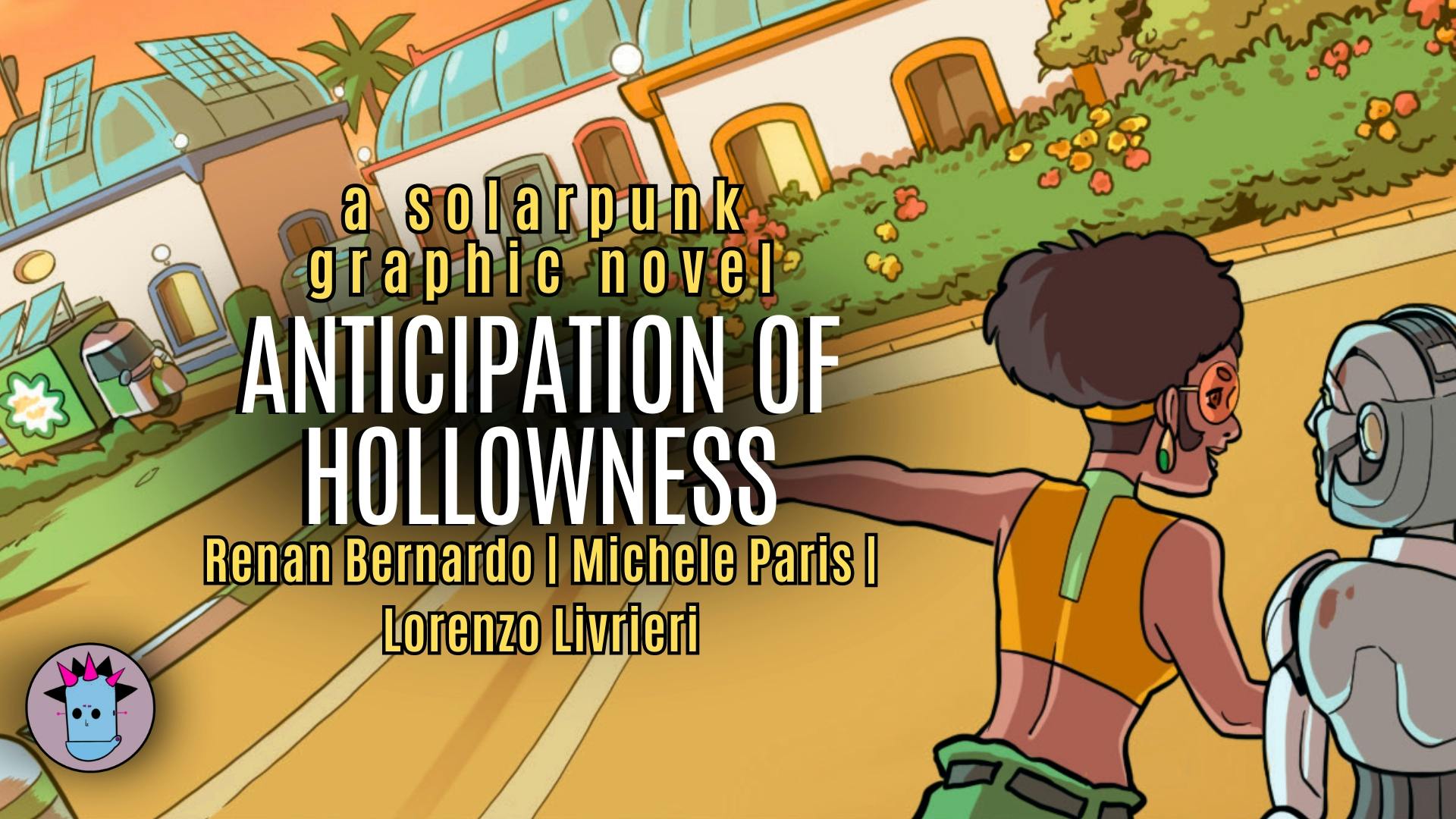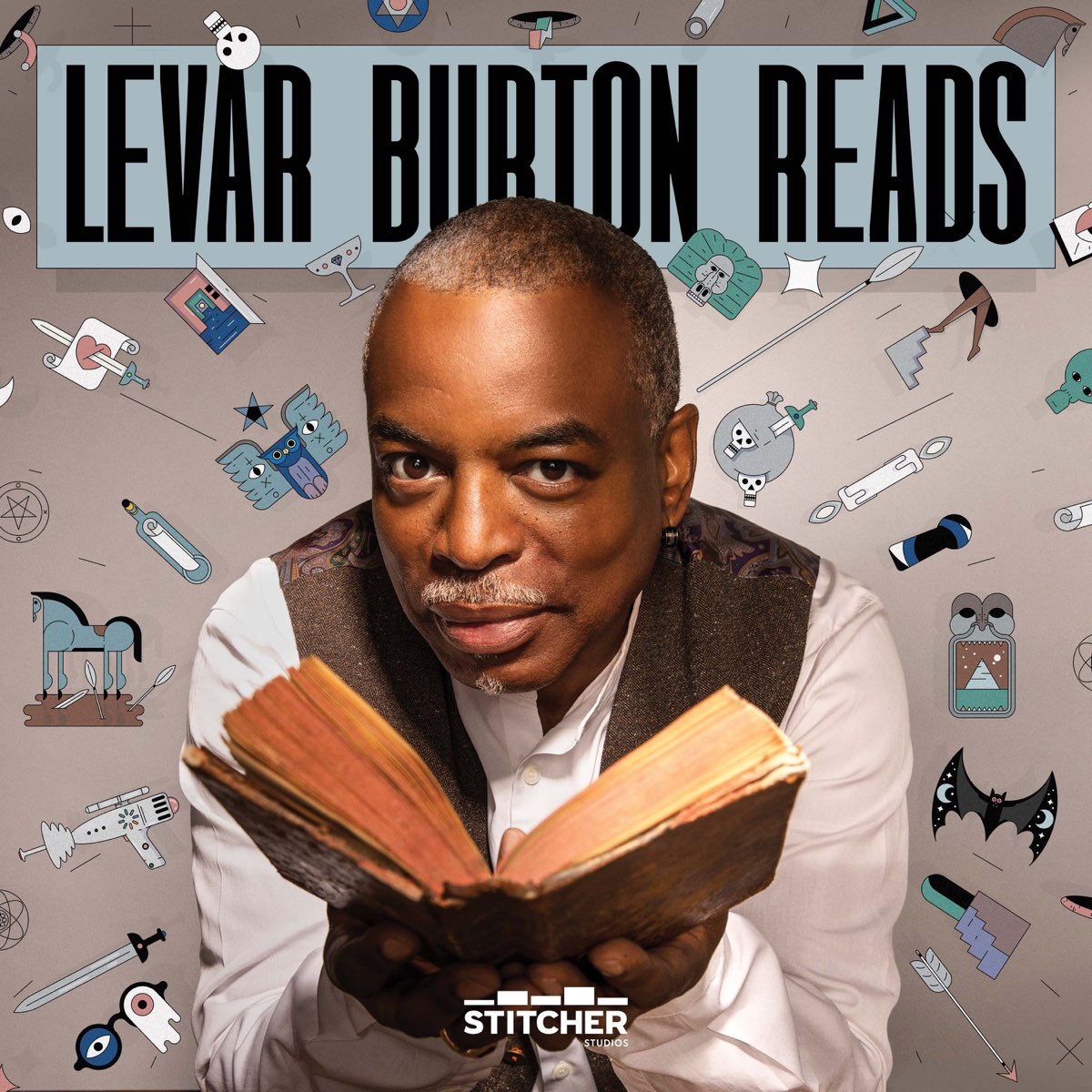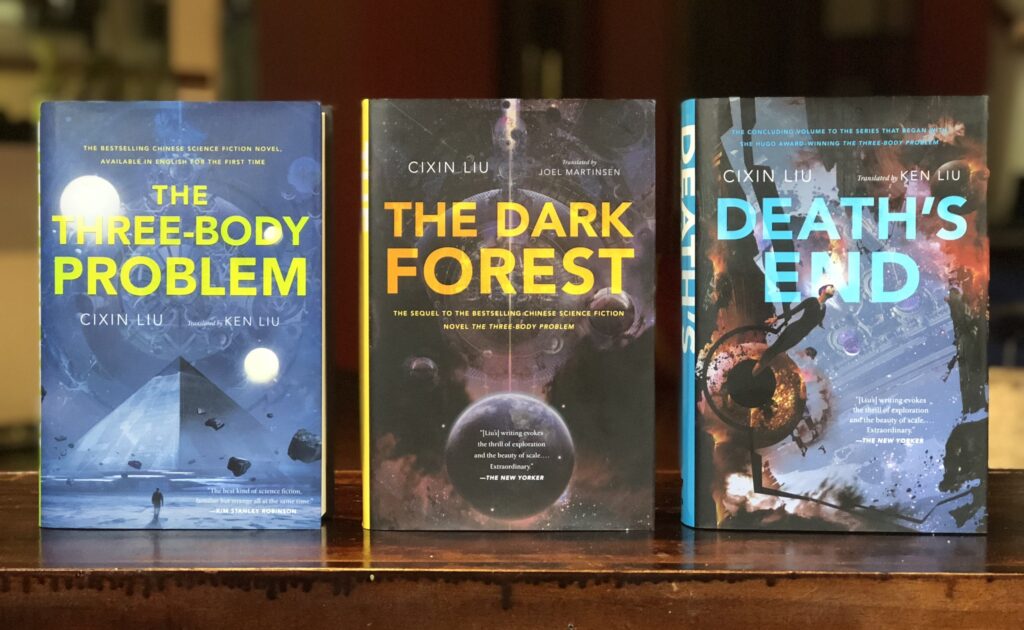Fiction
This week on Solarpunk Presents Podcast, Ariel chats with Selena Middleton, Publisher and Editor of Stelliform Press, all about publishing eco-fiction. What is eco-horror, and how does it relate to solarpunk fiction? What are the hallmarks of a good solarpunk story, according to Selena? How does history fit into visions of the future, and what does character have to do with it? Join us as we discuss all this and more.
The twelfth installment of the Bikes in Space series, This is Your Bike on Plants features 12 stories from a splendid garden of potential futures, from the speculative to the surreal—all powered by bicycles, grounded in feminism, and blossoming with creativity. You’ll find activist trees, magical flowers, feminist fairy tales, climate parables, photosynthesizing human-bicycle cyborgs, revolutionary elves, dazzling space gardens, green witchcraft, and more to delight your imagination. Lovers of cli-fi, solarpunk, hopepunk, and feminist bicycle science fiction will all find something to read here. Featuring stories by Kathryn Reilly, Marta Pelrine-Bacon, Cass Wilkinson Saldaña, Amanda McNeil, Ella P. Francis, Lisa Timpf, Bee Toothman, Kelley Tai, Jennifer Lee Rossman, J.D. Harlock, Kathryn Reese, and Joe Biel.
 grist.org
grist.org
Thirty-one years after its publication, Parable of the Sower continues to compel and unsettle many readers. Much of the book is harrowing. The violence begins just a few chapters in, when an elderly woman in Lauren’s walled-off urban village kills herself in the emotional aftermath of losing her entire family to a house fire just weeks after she was robbed and raped, and it refuses to relent for the next 300 pages. At least a dozen people have told me how they struggled to make it through the novel and its sequel, Parable of the Talents, because of the brutality that Lauren witnesses and endures (something I struggled to believe as someone obsessed with the books — even before Parable of the Sower became a New York Times bestseller for the first time in 2020). But Parable is, at its core, hopeful. Over the course of the story, Lauren works to refine, systematize, and share the belief system she has developed, called “Earthseed,” which she presents through poems and verses collected alongside her journal entries. In Earthseed, “God is Change,” and the task of humanity and the faithful is to learn how to transform from God’s victim into God’s partner — to become one who shapes change.
 www.backerkit.com
www.backerkit.com
A solarpunk graphic novel adapted by Michele Paris and Lorenzo Livrieri, based on the short story by Nebula Award nominated author, Renan Bernardo. Welcome to the post-fossil fuel city of Sundyal. Lush green, high-tech, and powered by clean energy, Sundyal seems like an idyllic place. But Janet really struggle's with Sundyal's lack of affordability. In fact, she can barely afford to eat. Meanwhile her best friend, an old and now obsolete model of android named Lyria, prepares to shutdown for the final time. But is losing Lydia forever, in fact, the only way to save her? Janet wrestles with this and whether or not it's right and justified to objectify and sell her friend like some... disposable thing? Does it matter if doing so means she can afford to stay in Sundyal? And if the price of utopia is that high and inaccessible, is it really a utopia?
 blogs.lse.ac.uk
blogs.lse.ac.uk
Kim Stanley Robinson is regarded as one the greatest living writers of science fiction with more than 20 novels and many awards to his name. In this interview with Anna D’Alton (LSE Review of Books), he discusses the climate crisis, his political commitment to utopian fiction and art’s capacity for imagining alternative ways of living.
 solarpunkstories.substack.com
solarpunkstories.substack.com
Scavenger’s Reign is about a handful of humans who have abandoned their spaceship, The Demeter, due to a solar storm. Their escape pods land on the utterly alien planet Vesta. This world is teeming with an incredible array of lifeforms that boggle the mind. One of the crew manages to remote pilot the Demeter to land on Vesta and the disparate survivors head towards it. On their journeys they make their way through a cornucopia of brilliantly weird plant and animal life. We think you should definitely watch this series on Neftlix as soon as you can to help the cause of solarpunk. This is even though we don’t think Scavneger’s Reign is really solarpunk itself. We’ll explain why in the rest of this post. Be warned what follows contains spoilers, so we strongly recommend you watch Scavenger’s Reign first and then return to read the rest of this article. If you’ve already seen this amazing show then feel free to read on.
 www.solarpunkstories.com
www.solarpunkstories.com
A soothing solarpunk change to more bombastic sci-fi epics, After Yang is a meditative exploration of identity, life, and family in a near-future Earth.
My Neighbour Totoro is a pretty foundational movie in the Studio Ghibli canon, beloved by generations - the mascot of the studio, even! - and admired by solarpunks. But what is it about this movie that is so inspiring? The visuals are beautiful, but what about the plot and conflict? Is there conflict? Compared to, say, the flashy plots of action films or even recent Disney animated features, can there be satisfying conflict in a story that doesn't seem to have much in the way of stakes? Or perhaps is this a different way of storytelling altogether? Ariel and Christina consider these questions and more in a discussion of My Neighbor Totoro.
In this bonus chat, Ariel and Christina talk about the 1984 Studio Ghibli film - and solarpunk inspo par excellence - Nausicaä of the Valley of the Wind. Does the film live up to its significant reputation and deserve its cred? Is Nausicaä a solarpunk role model, or is this more of a princess-on-a-mission-style of legend? Tune in as we discuss this and more!
cross-posted from: https://slrpnk.net/post/8178247 > We're editing down the manual, and I'm sharing some backstory to the world that didn't make the cut in the manual. This is the kind of silly microfiction that players are encouraged to write and share. This particular piece I wrote because I was trying to imagine where gorillas would live in the US, and why, and how. > > In writing the backstory for Ewan Reinhart, I decided that the Gulf Coast was probably the most ecologically sensible place to try to establish a population of gorillas, and then started imaging the circumstances under which the US would do so. Surprise: it's the military industrial complex working hand-in-hand with border control! > > >**The Establishment of the Gulf Coast Gorilla Population** > > > >Starting in the 2030s, Northwestern State University in Louisiana began trying to create a stable population of gorillas within one of Louisiana’s wildlife preserves. Among the project goals were tests of whether uplifting would improve the ability of the gorillas to thrive and assist humans in optimizing their survival. Several years after transplanting heirloom gorillas from US zoos and administering enhancement programs, the US Department of Defense began piloting Project Primal Warrior: a project to test the feasibility and performance of gorilla shock troops. In 2042 the DOD invested heavily in the Louisiana Gorilla Sanctuary project with the goal of creating 1,000 gorilla infantry soldiers by 2050 and the goal to produce 10,000 u-gorilla soldiers by 2060. They continued to generously fund the Louisiana Gorilla project in order to support the project goal of producing a target population of 40,000 gorillas in the US by 2060 in order to support Project Primal Warrior. > > > >Herman Ducharme was among the early cohorts to undergo Army training. In 2042, at the age of ten he began keeping a journal at the request of his handler. Concurrently, he began keeping a private diary in addition to one his handlers reviewed. It documents Herman’s exploration into unscreened literature at the fort library and conversations among the other gorillas about their situation. Ducharme’s secret diary would go on to establish a historical record of an emerging political consciousness among the early gulf coast gorilla troops. > In 2048, the military began deploying army-trained gorillas along with Customs and Border Patrol agents. In 2049, the Bureau of Land Management began establishing gorilla habitats for mixed populations of maximally and minimally enhanced gorillas along most of the eastern third of the US-Mexico border. Though the pretext was for gorilla conservation, contemporary news coverage recognized the motivation to try and surveil and control the border. > > > >By 2052 the Department of Homeland Security began the top secret project Simian Sentry. Under the program, DHS began incentivizing, manipulating, and pressuring the population of 8,000 gorillas living directly along the border to discourage crossing attempts through violence against humans who passed through their territory. Around the same time, residents of the southern Gorilla sanctuary became acquainted with members of the nascent parahuman rights movement through their contact with Veronica Sandoval’s production team, who were working on “Voices of the Unheard”. > > > >In 2056, the brutal murder of a family camping in Louisiana brought national attention to the danger the gorillas living along the gulf coast posed. In the midst of the furor, a young gorilla investigator named Whisper Dubois and a human partner broke the story on the clandestine militarization of the southern Gorilla sanctuary by the DOD and CBP under Simian Sentry. The program was canceled following heated congressional hearings that took place amid a fierce public debate over the public perception of Gorillas. The DOD began phasing out Project Primal Warrior soon after. Attempts to evict 6,000 u-gorilla infantrymen from the barracks in which they’d lived since they were children led to riots among both gorillas and humans. The military eventually completed the move-out by offering a generous severance package and investments in gorilla infrastructure. Because of the gulf of trust between the Gulf Coast Gorillas and the US government, these monies were directed – on the gorillas’ insistence – to the Circle of Nations for management and disbursement. By 2060, the weakened US government had lost interest in managing the complicated situation they’d created along the gulf coast. To the gorillas’ delight, the federal government eagerly left matters to the states and the Circle of Nations as much as possible going forward. >
 alxd.org
alxd.org
After reading "The Ministry..." for 3 painful years, I can finally share my review with you!
cross-posted from: https://slrpnk.net/post/7767375 > @sarenaulibarri@wandering.shop is teaching a seminar that looks very cool. I'm excited to hear what she's saying. Ticket start at $25, but are on a generous sliding scale. > > >I'm teaching a seminar for Clarion West on April 4th! Drawing on my experience as an anthology editor for World Weaver Press and a story reviewer for Imagine 2200, I'll go over some of the most common issues that I see in climate fiction slush piles. > > #solarpunk #lunarpunk #ClimateFiction #ClimateWriters #ScienceFiction #SciFiWriters #ClarionWest #WritingClass #Imagine2200 > > https://clarionwest.app.neoncrm.com/np/clients/clarionwest/eventList.jsp
 waterdragonpublishing.com
waterdragonpublishing.com
We are excited to announce that we have signed an agreement with author BrightFlame to publish her debut novel, The Working, where a modern coven must thwart a looming eco-cataclysm and find the key to the bright future we all need. BrightFlame writes, teaches, and makes magic towards a just, regenerative world. Her speculative fiction is featured in Solarpunk Magazine, Bioluminescent (Android Press), and Solarpunk Creatures (World Weaver Press). She is known for her teaching in the worldwide pagan community and co-founded the Center for Sustainable Futures at Columbia University that features her workshops and nonfiction.
When there's a new RPG on the block claiming to do [#Solarpunk](https://wandering.shop/tags/Solarpunk), I'm obviously interested. Recently, [@FullyAutomatedRPG](https://mstdn.games/@FullyAutomatedRPG) made its way to me via [@fiction](https://slrpnk.net/c/fiction) so I'm giving it a look. What does it want to do? It wants to be a kind of D&D for Solarpunk – a big kitchen sink game that becomes a cornerstone for the genre. That's… Hm, I like my RPGs written with a lightning focus on telling specific stories, so I feel like I'll be biased against [#FullyAutomated](https://wandering.shop/tags/FullyAutomated), but let's see. 1/8

Fully Automated! is a free open-source tabletop roleplaying game set in a wild solarpunk future! And we’ve got some exciting additions since our last update in December. First, there's the incredible cover art by Sean Bodley! Next, there’s new interior art by Jacob Coffin, along with pages and pages of new content by our amazing open-source community of developers. While there’s still lots of editing to do, the current text of the game manual and of the first campaign of adventures represent a pretty close approximation to what you’ll find in the final version. You can find both (for free) on our website at fullyautomatedrpg.com! That’s the other thing: in addition to our Discord server, we now have a website, a Mastodon account (@fullyautomatedrpg@mstdn.games) and a Lemmy community (SLRPNK.net/c/fullyautomatedrpg). Follow us or join our mailing list for updates as we approach the release of the official first edition of the game. And if you want to contribute art or ideas, our developer group is always grateful for new contributors! ~~~ See more of Sean Bodley’s work at seanbodley.com, and Jacob Coffin’s work at jacobcoffinwrites.wordpress.com.
 www.worldweaverpress.com
www.worldweaverpress.com
A newly sentient AI inhabits a Roomba to escape from their research office, and a robotic dog hunts for rain in a drought-ridden world. A murder of crows disrupts production on a solar farm, and a young woman communes with a telepathic fungal network to protect a forest. A suspicious cat follows bees across the rooftops of a solarpunk city, and a rabbit hitches a ride to the Grand Canyon to fulfil a prophecy. The path toward better futures is one we must walk alongside other creatures, negotiating the challenges of multispecies justice. Solarpunk Creatures introduces a whole new cast of more-than-human protagonists: organic and digital, alien and fantastic, tiny and boundlessly large.
 reckoning.press
reckoning.press
Reckoning 9 is open for general submissions! There is no specific theme for this issue; if your work concerns any aspect of environmental justice, from food sovereignty to ocean plastics to industrial cleanup to Indigenous rights, we want to see it. In fact, we look forward most eagerly to perspectives none of us has thought of. Please help us learn and understand. As always, we are seeking art, poetry, short fiction, and creative nonfiction up to 20,000 words in length from Indigenous, Black, Brown, queer, trans, disabled, neurodivergent and/or otherwise marginalized writers and artists from everywhere, and we pay $50/page for poetry and art, 10c/word for prose. Deadline for this issue is the solar equinox, September 22, 2024.
 grist.org
grist.org
Grist’s Imagine 2200: Climate Fiction for Future Ancestors short story contest celebrates stories that offer vivid, hope-filled, diverse visions of climate progress. From 1,000 submissions, our reviewers and judges selected the three winners and nine finalists you will discover in this collection. These stories are not afraid to explore the challenges ahead, but offer hope that we can work together to build a more sustainable and just world. Through rich characters, lovingly sketched settings, and gripping plots, they welcome you into futures that celebrate who we are and what we can become — and, we hope, inspire you to work toward them.
 www.instagram.com
www.instagram.com
The full story is from a solarpunk anthology [*Solarpunk Creatures*](https://www.worldweaverpress.com/store/p186/Solarpunk_Creatures.html).
 www.drmichaeljharrisbooks.com
www.drmichaeljharrisbooks.com
>How *Star Wars* can help today’s young rebels bring down empire, defeat the dark side, and save the future - *Welcome to the Rebellion* explores the radical political roots of *Star Wars* and shows how the saga continues to inspire a new generation of activists and campaigners today. > >What does it mean that our most popular modern myth is a radical left story about fighting corporate authoritarianism? From its roots in the 1960s new left, *Star Wars* still speaks to millions of people today. By design, the saga mirrors our own time and politics. A real empire of corporate domination has arisen within weakened and corrupted republics. Now it threatens our existence on a planetary scale. > >But, the popularity of *Star Wars* also suggests that if we tell the right stories, we can welcome many more people to fight for a better world... > >There’s also a slideshow summary of the book [here](https://www.drmichaeljharrisbooks.com/blog/how-star-wars-can-help-todays-young-rebels-save-the-future), and you can read a series of blog posts based on the main arguments in the book starting [here](https://www.drmichaeljharrisbooks.com/blog/why-the-politics-of-star-wars-still-matters-part-1-its-not-a-story-the-jedi-would-tell-you). Interview with the author Michael Harris on THIS IS REVOLUTION podcast, featuring Chris Cutrone: "Why The Left Needs Grand Narratives" ([SoundCloud](https://soundcloud.com/bitterlakeband/why-the-left-needs-grand-narratives)) ([YouTube](https://www.youtube.com/watch?v=LnhNpI1iEoA))
I really enjoy "A Psalm for the Wild-Built" by Becky Chambers. It's a nice, serene escape to what could be. What other books help you relax and maintain a positive outlook?
 lithub.com
lithub.com
I'm curious what people think of this article with regard to the solarpunk literary movement, past present and future.
 www.tor.com
www.tor.com
>These awards “seek to celebrate the vibrancy and diversity of the current and future landscape of science fiction, fantasy and horror by recognizing incredible feats in storytelling and outstanding efforts towards inclusivity within the genre.”
 susankayequinn.com
susankayequinn.com
Have not read them yet, but sounds somewhat interesting.
I've really enjoyed his novels that grapple with how we can make computer technology work for us rather than for large corporations. His next book, The Lost Cause, is being called "the first great YIMBY novel," a solarpunk look at a post Green New Deal society.
 billwillingham.substack.com
billwillingham.substack.com
I know Fables (e.g. The Wolf Among Us) is not solarpunk – yet! Go make spinoffs, it's in the commons now! 🔥
Excerpt: > World-building is a literary tool primarily used to shape science fiction, fantasy, and other speculative fictions. It can be a way to support Black folks to articulate their boldest political imaginations by reimagining and reconnecting to an ancestral sense of Spirit and Story: who we are and what we mean to the world. Building these worlds allows us to reimagine and reaffirm our shared values and ways of being together, in ways that center Black love, Black joy, Black rest, Black time. We can reimagine and redesign our neighborhoods and cities as liberated zones and decolonized spaces, and reimagine and transform our systems and structures—from governance, to economics, to education—to reflect our values.
 www.wired.com
www.wired.com
[Archive.org](https://web.archive.org/web/20230824093808/https://www.wired.com/story/is-becky-chambers-ultimate-hope-science-fiction/) If you have problems, ask yourself one question: Do I drink enough tea? In the history of human civilization, boiling plants in water has probably helped more people get through their days than just about any other ritual or nontoxic consumable. Tea is a social salve, a private therapy, and the drink of choice for the clearest-headed among us, from mothers to mountain monks. For reasons less scientific than simply understood by all, tea slows existence—calms it—considerably down. Becky Chambers is a lifelong lover of tea. She is also a writer of hip, very-now science fiction books, most of which feature scenes of various life-forms de-stressing over steaming beverages. Doesn’t matter if they’re human, lizard alien, space bug, or robot; they all need relief from the exigencies of existence, and they all find it the same way. “A cup of tea can really change your whole mood,” Chambers says, “even if it’s just a psychological comfort blanket.” The first time Chambers and I meet, back in May, she sips on something called Evening in Missoula. “Imagine an unsweet root beer, which sounds terrible,” she says, before declaring that she’s absolutely obsessed with it. It’s one of the “weird” teas she gets as part of a monthly subscription box, enjoyed in steady rotation with other, less weird herbals she currently has on hand: peppermint, ginger, chamomile, several chais. She hates hibiscus and, though it’s her wife’s favorite, licorice root, and because it disagrees with her nerves and fluttering heart, she avoids coffee. “I think I’m the only writer in the world,” Chambers says, “who doesn’t drink caffeine.” She manages just fine without it. Since the publication of her much-loved first book, The Long Way to a Small, Angry Planet, in 2014, she has written three more set in the same universe and two unrelated novellas, the latest of which, A Psalm for the Wild-Built, came out in July. It’s Chambers at her most Chambersian: touchy-feely, interior, and brimful of tea. The main character quite literally puts the tea in therapy—Dex is a young monk who assists far-future humans by brewing them the just-right hot drink as they offload their psychic baggage. “For anybody who could use a break,” reads Psalm’s dedication. Roll your eyes all you want; they’ll be prickling with happy tears by page 36, when Dex realizes the tea therapy is making a difference. In a world numbed by cynicisms and divisions, Chambers’ stories are intended to repair—to warm up our insides and restore feeling. So you might say that Chambers is, herself, the tea of our times, a soothing soothsayer whose well-meaning characters act out a fragrant, curative optimism. This makes Chambers some combination of two things: kind of sort of extremely boring, and one of the best hopes for the future. In recent years, Chambers’ name has come to be associated with a specific type of science fiction. It’s known, cutesily and somewhat oxymoronically, as hopepunk. If Chambers is the tea of the day, then hopepunk is the lovingly hand-crafted kettle that contains her. Sci-fi is full of this sort of thing. Steampunk, solarpunk, biopunk, nanopunk—all manner of generic punkeries (even mannerpunk) vie for readers. The first of their kind, cyberpunk, dates back to a 1983 short story about teenage hackers, and that’s really all the suffix, in its now overextended ubiquity, signifies: a vague attitude of rebellion attached to any given aesthetic. In 2017 the fantasy writer Alexandra Rowland had a thought. Hope could be edgy too! Hence: hopepunk. “It’s not about glory or noble deeds,” Rowland wrote in an essay on the subject. “It’s about being kind merely for the sake of kindness.” For Chambers, who didn’t ask to be labeled hopepunk but likes the term “very much,” the simple act of being kind in her writing, of imagining futures in which decency triumphs and people are allowed to cry tears of joy, qualifies as more than sufficiently rebellious in the 21st century. “You’re looking at the world exactly as it is, with all of its grimness and all of its tragedy, and you say, No, I believe this can be better,” she says. “That to me is punk as hell.” Like all the punk variants, hopepunk has its own look and feel, emphasis on feel. Not much stuff goes boom; feelings are privileged over plot fireworks. Characters come from every background and/or planet, and they usually end up happier and wiser. Aesthetically, it’s the definition of cozy. You want to lounge and frolic and lose yourself forever in hopepunk’s bright, shiny worlds—particularly those imagined by Chambers, like the modder district on the planet Coriol, the setting of her second book, A Closed and Common Orbit: There were lovingly tended strips of plantlife basking under sunlamps, and glowing fountains that glittered in the dark. There were sculptures made of scrap, smooth benches utilized by chatting friends and amorous couples, soft lighting fixtures that looked like the pet projects of individuals with disparate senses of style. There was nothing bureaucratic or single-minded about the public decor. This was a place built by many. […] There was a quiet slowness here. Feel that? With every bit of description, you sink deeper and deeper into a squishy, sparkly beanbag of cradling support—“smooth,” “glowing,” “soft,” “quiet”—until you’re quite certain that something beautiful and stable and comfortable exists not only somewhere in this crazy stupid universe but is possible here, right now, for you. Congratulations. You’ve just been hopepunk’d. A Closed and Common Orbit is about an existentially confused AI, and it’s the second of Chambers’ Hugo-winning The Wayfarers, four stand-alone novels, beginning with The Long Way to a Small, Angry Planet, that get more and more hopepunky as they go on. In other words: Less and less seems to happen in them. The third one, Record of a Spaceborn Few, follows bored humans living on generation ships. By the last book, The Galaxy, and the Ground Within—Chambers’ titles are, to a one, rhythmical mouthfuls—there’s not even space travel anymore; the only thing the characters do is talk and argue before ultimately agreeing to help one another. “If you want big, crunchy plot, go read someone else’s stuff,” Chambers says. “You can have things that still feel fraught without there being something that’s about to snap. Tension can just be internal. It can just come from you.” When she says “you,” she means her characters. But she also means herself. Because Chambers’ approach to her hopepunk storytelling is based, it seems, on her experience of life. Becky Chambers with a mug of tea walking in a forest Not that Chambers has led a dull, plotless, unadventurous existence. The daughter of an astrobiology educator and a satellite engineer, she dreams of going to space one day. She loves playing board games and video games. She looks for bugs. She moves and travels a lot and has lived for many years abroad—one in Edinburgh, where she worked as a bartender, and nearly five in Reykjavik, where her wife is from. Two and a half years ago, she shaved her head. When she Zooms with me, fully looking the part of the bespectacled, bald-headed millennial sci-fi writer, it’s from her current home in Humboldt County, California. The little of it I see onscreen appears as cozy as you’d expect. Behind her is a yellow wall adorned with a wooden deer head, and her living room opens onto verdant forest. “Lazy California craftsman” is how she describes her design choices. Chambers brings some of California to whatever she writes. Often, her fictional climes are temperate, her fruits and vegetables delectable, and her alien inhabitants from all over the place. Chambers grew up in Torrance, a suburb of Los Angeles, in an international household. With her German grandmother, Chambers remembers doing many an afternoon tea. Tea was, in fact, a regular part of her youth. She and her mom would also take frequent trips to the tearoom at the Huntington Library. On one such occasion, Chambers wanted to buy sandwiches for her best friend, but her mom wouldn’t let her. Said best friend was a stuffed-animal gorilla, you see. Its name: Gorilla Gorilla Gorilla. “Because that’s the scientific name for mountain gorilla,” Chambers says, referring to Gorilla beringei beringei. “I was an obnoxious little know-it-all.” Some of that knowledge she put to preprofessional use, writing little fictional stories, mostly fantasy, based on her favorite books and movies. Chambers’ mom introduced her to Tolkien; Star Wars and Star Trek were movie-night mainstays; she was obsessed with Sailor Moon. When Chambers was 12, Contact came out. To explore the unknown, to encounter aliens “through a female protagonist,” Chambers says, “it grabbed me hard.” After that, she began reading Carl Sagan, the beginning of her fascination with space. Looking up and out, though, distracted Chambers from having to look within, at the “absolute absence” she felt at the center of her young life. “Who I was, where I fit, what sort of life I could expect,” she says, “and there was just nothing.” Then, at 13, Chambers met a girl in a science class whose older sister had a gay best friend. “I was like, oh, that’s an option?” Chambers remembers thinking. “Well, my whole life makes sense now.” It would take several years before she was comfortable enough to come out to her parents. When she did, Mom was wonderful; Dad, not so much. “It was really bad at first, you know,” she says, shutting down a little. Although he’s “come around a lot,” Chambers says, she still doesn’t like talking about it. Dig Deeper With Our Longreads Newsletter Sign up to get our best longform features, investigations, and thought-provoking essays, in your inbox every Sunday. In Chambers’ books, people—the word she uses not just for humans but for all member species of her so-called Galactic Commons—don’t come out. They simply don’t have to. “I don’t have terms for gay, straight, etc.,” she says. “People are who they are and they bring home whoever they’re going to bring home and they love who they love.” In The Long Way, Rosemary, a human woman, develops feelings for a female reptile-bird alien named Sissix. Rosemary “leaned in,” Chambers writes in a pivotal scene, “running a smooth fingertip along the length of one of Sissix’s feathers.” When I tell Chambers that a (straight, male) colleague of mine, who read the book, doesn’t believe humans would actually want to have sex with giant lizards, she is appalled. Has he even been on the internet? The internet is where a college-age Chambers met her future wife, Berglaug Asmundardottir. On a Star Trek roleplaying forum, to be exact. Asmundardottir is not, so far as we know, a lizard person; she is, merely, Icelandic. When Chambers talks about her, the lighting in the room seems to somehow brighten and soften at once. In the acknowledgements section of each of the Wayfarers books, Chambers thanks her wife in a new way. Record of a Spaceborn Few: “Berglaug the incredible.” A Closed and Common Orbit: “The best part of every day.” The Galaxy, and the Ground Within: “If one scrap of my writing outlives me, I want it to be the one that says that I loved her, and so I will write it wherever I can.” Out of college, Chambers moved with Asmundardottir to Edinburgh. The plan was to find work in the theater scene there—that’s what Chambers studied in school—but nothing much materialized. A couple years later, they relocated to Iceland, where Chambers freelanced for US publications, all the while writing dialog and scenes for an unformed story about queer misfits in space. For a long time, Chambers didn’t think “it was a real book,” she says. “I was like, no one is going to want to read this. It’s not a real story. There are no planets blowing up.” The tension, in other words, was internal. It came from the characters. When I suggest to Chambers that the narratives of her novels mirror the coming-out process—a lot of tension, very little plot—she pauses. “I think … I think that’s fair,” she says. “It’s not one of those conscious things, but I definitely think that’s fair.” Whatever the case, the story resonated. With the help of a small following she’d built up as a freelancer, plus the interest of a handful of strangers, Chambers was able to self-finance on Kickstarter the novel that became A Long Way to a Small, Angry Planet. Among other positive notices, io9 called it “the most delightful space opera” of the year. After that, Chambers’ fears of being “pigeonholed as a gay author” lessened. “I can’t even say I’ve grown a thicker skin,” she says. “It’s just something I’m more comfortable being honest about.” When she went to write her first novella, To Be Taught, If Fortunate, in 2019, she says she made all the astronauts in it queer basically by accident. “I’m just writing my friends and my family,” she says. Or, as she puts it in The Galaxy, and the Ground Within, “there were no requirements when it came to what constituted a family.” A phrase sometimes used to describe Chambers’ fiction is “queer-normative”—non-straightness as an unremarkable fact of life. The new novella, A Psalm for the Wild-Built, is being marketed by its publisher, an imprint of Tor, as “queer-normative hopepunk,” ad copy only possible, it seems, in 2021. Dex, the tea monk protagonist, is nonbinary; Chambers uses they/them pronouns for the character. True to form, almost nothing happens in the story. Dex, a chronic fretter, goes off to find themself in the wilderness and meets an adorable robot there named Mosscap, and the two of them hash out their differences around a campfire. In the most touching scene, Mosscap brews Dex a cup of tea. Not a very good one, as the robot can’t taste and only succeeds in producing hot thyme water, but it’s the thought that counts. “I feel like Psalm is the quietest book I’ve ever written,” Chambers says. “And I was unafraid of that entirely.” The book explores questions of identity, consciousness, and personal fulfillment. It also makes, Chambers believes, a hopepunkishly radical argument: Everybody needs a cup of tea. Everybody wanders into the woods. Queer people have magical adventures too. The second time we connect on Zoom, in June, I expect Chambers to be drinking more tea. But something’s happened. “A crisis,” as she puts it. Her electric kettle has stopped working. So she’s having a kombucha instead. “It’s technically tea,” she says lamely, “just with stuff in it.” The more we talk about tea, the more Chambers and I realize we’re circling a fundamental truth about the genre: Tea—cross-cultural and civilizing; steeped in historical trade; revealing, in the leaves it leaves behind, of possible futures—might be the most science-fictional of all beverages. Long before Star Trek’s Captain Picard asked for “tea, Earl Grey, hot,” the Infinite Improbability Drive in Hitchhiker’s Guide to the Galaxy was being powered, Douglas Adams wrote, by “a fresh cup of really hot tea.” More recently, there’s Memory of Water by Emmi Itäranta, about a tea master in a water-scarce dystopia, and novellas like The Tea Master and the Detective by Aliette de Bodard. Ann Leckie made tea, its rituals and its trade, central to her Imperial Radch books, one of the more important trilogies in modern times. Even Yoda, in swampy exile, enjoys steaming mugs of things. As does Baby Yoda, his serene sipping memorialized in a thousand memes. What tea signals, for starters, is a civilization of sufficient advancement. As Chambers says, “Most alien cultures, if they’re relatable enough to our own, have some sort of warm brewed beverage.” Roots, herbs, flowers, fruit: All of it can be steeped in water and called tea, really. Though the people in her Wayfarers books drink proper tea—“the tea soothed a tightness she hadn’t known was there,” Chambers writes of one of the restless souls in Spaceborn Few—they also guzzle copious amounts of something called mek. It’s made from powdered tree bark, can be served hot or cold, and has a mild narcotic effect. That’s tea too, and it binds the various peoples of the Galactic Commons together. On top of its universality, or perhaps as a driver of it, tea has always been a kind of prototypical trade object, the material evidence of one culture dipping into, and often exploiting, another. Which is, of course, what science fiction, in its classic form, is all about: contact, between aliens, one of whom comes out on top. In a way, tea functions as shorthand for the colonialist fantasy that powers the exploratory thrust, the Prime Directive, of the genre. “Even if there is not a direct metaphor,” Chambers says, “that subtext is there.” From the start, Chambers has sought to subvert that subtext, imagining quieter, nicer, gayer versions of the space operas she grew up with. Her characters aren’t colonizers or heroes of destiny, plunging mannishly into the abyss of the unknown and conquering all they find. They’re tunnelers, caretakers, sex workers, tea monks, and they mainly just want to talk about their feelings. “In science fiction,” she says, “I’m very interested in ripping out the drywall and seeing what’s behind it and messing around with the fundamental pieces of it.” But even Chambers is unsatisfied with her progress thus far. “The Galactic Commons … it’s postcolonial,” she says, “but it’s still born out of this really deep-rooted idea of what an intergalactic society is, that the natural arc of civilization is just to go out there and spread as far as you can. Can we tell a similar sort of story without that basis? What’s the alternative model?” Someday, she thinks, she’ll attempt an answer—a tacit admission that A Psalm for the Wild-Built, and the sequel planned for next year, won’t be the series in which Chambers offers a searing reinterpretation of the visionary potential of science fiction. It’s just about a monk and a robot, after all, its ambitions too localized, its aesthetic, perhaps, more hope than punk. Temperature-wise, it never exceeds lukewarm, and true rebellion, Chambers seems to understand, requires hotter liquids. Or at least a working kettle. A week after hers breaks, a replacement arrives, and “all,” she reports to me, “is right with the world.” This, for now, is how every Becky Chambers story ends. The crisis has been averted.
This is truly one of the most amazing things I've ever read. It's almost inconceivable to me how an author could extrapolate so keenly where technological advances would take us more than a century later.

Hello All! Hope everyone has been having a good day so far! As an addition to the worldbuilding blogs that I've been writing, I've also wanted to write short "slice of life" stories that go along with each theme. This slice of life [SOL] story developed from the blog "[Deliveries at the Speed of Life](https://www.justasolarpunk.com/deliveries-at-the-speed-of-life/)" and does try to incorporate the theme and feedback, but ultimately focuses on the human aspect that is the underlying element in all things Solarpunk. So, without further ado: [Solarium - Downtime [SOL002]](https://www.justasolarpunk.com/down_time_sol002/) I try to use these writing prompts not only as a way to further focus on a theme, but also to further develop my own writing style, so feel free to leave any comments, questions, or critiques that you may have. Always happy to hear other's opinion. Hope you enjoy the read and have a great rest of your day! :)
My attempts at finding TV I like to watch haven't been successful lately. I like historical stuff, but *not* like Vikings, or Last Kingdom. Not like all those nasty pirate series. Not like Rome, weren't they the first to start this unholy diluvium of cookie cutter pseudo-historical modern TV? I like fantasy, but please don't GoT me. I'm giving up on Battlestar Galactica - there were some interesting ideas in this and it was bad almost good, but I can't stand its military propaganda-i-ness a minute longer. It's all gore, rape, war, sex, big CGI battle, torture, two lines cheesy dialog, repeat. Every line of dialog these days seems to be written by a badly maintained, malfunctioning robot slave, every character half well constructed is allowed to descend into nonsense after 2 seasons, just so the 'aesthetics' consisting of an endless stream of highly detailed violence can be perpetuated. I'm glad the writers are on strike, nothing but good can come out of it. I hope they start small, independent studios and produce quality work. I did watch quite some Neil Gaiman stuff I liked, and have heard a new season of Good Omens comes out? So that helps a bit. I like crime, used to watch a lot of British crime series, liked True Detective. I don't like sitcoms. I like serious stuff that's also funny, or vice versa. I like dialogs that make sense. Please recommend me something, can be older or even old. I remember watching TV used to be fun but everything out there these days seems rather enshittified.
Fiction
!fiction@slrpnk.netSolarpunk themed fiction. Books, short stories, movies, games... pretty much anything you can dream of!





